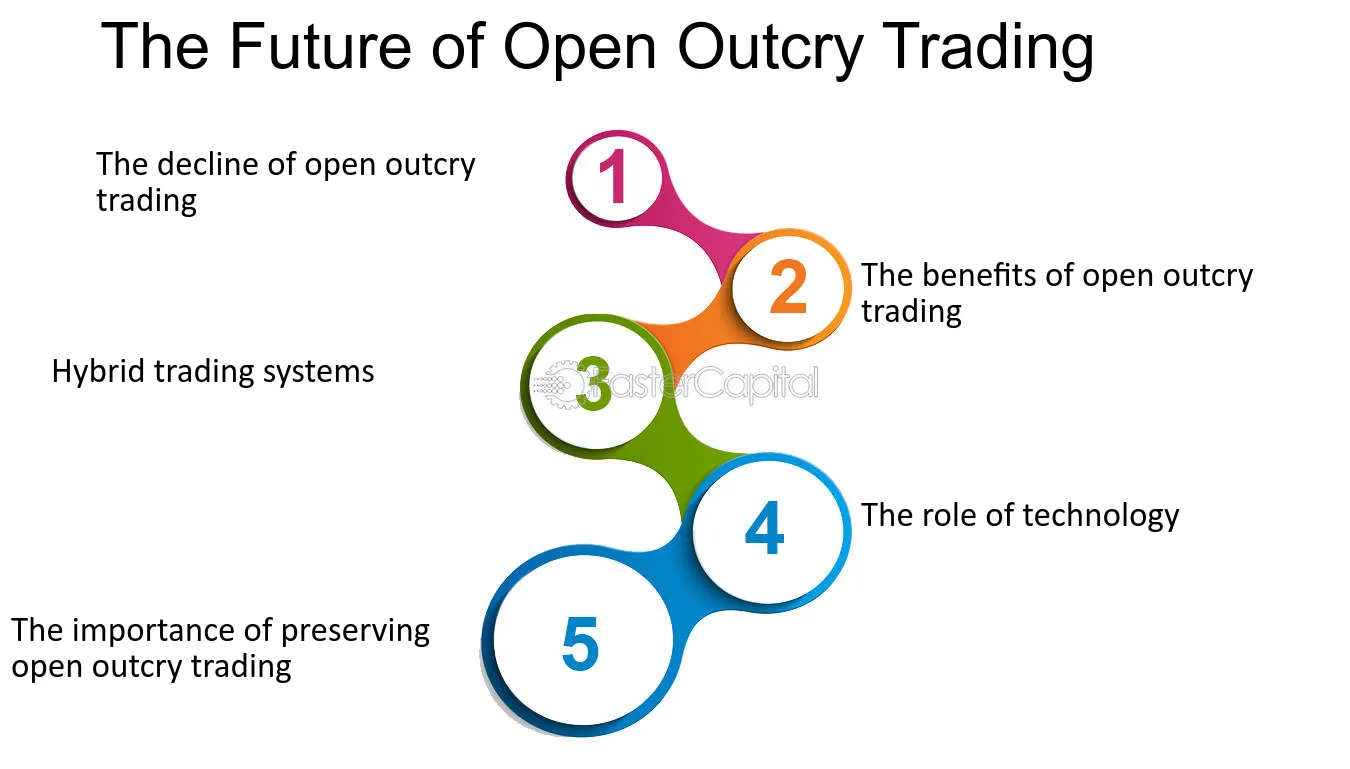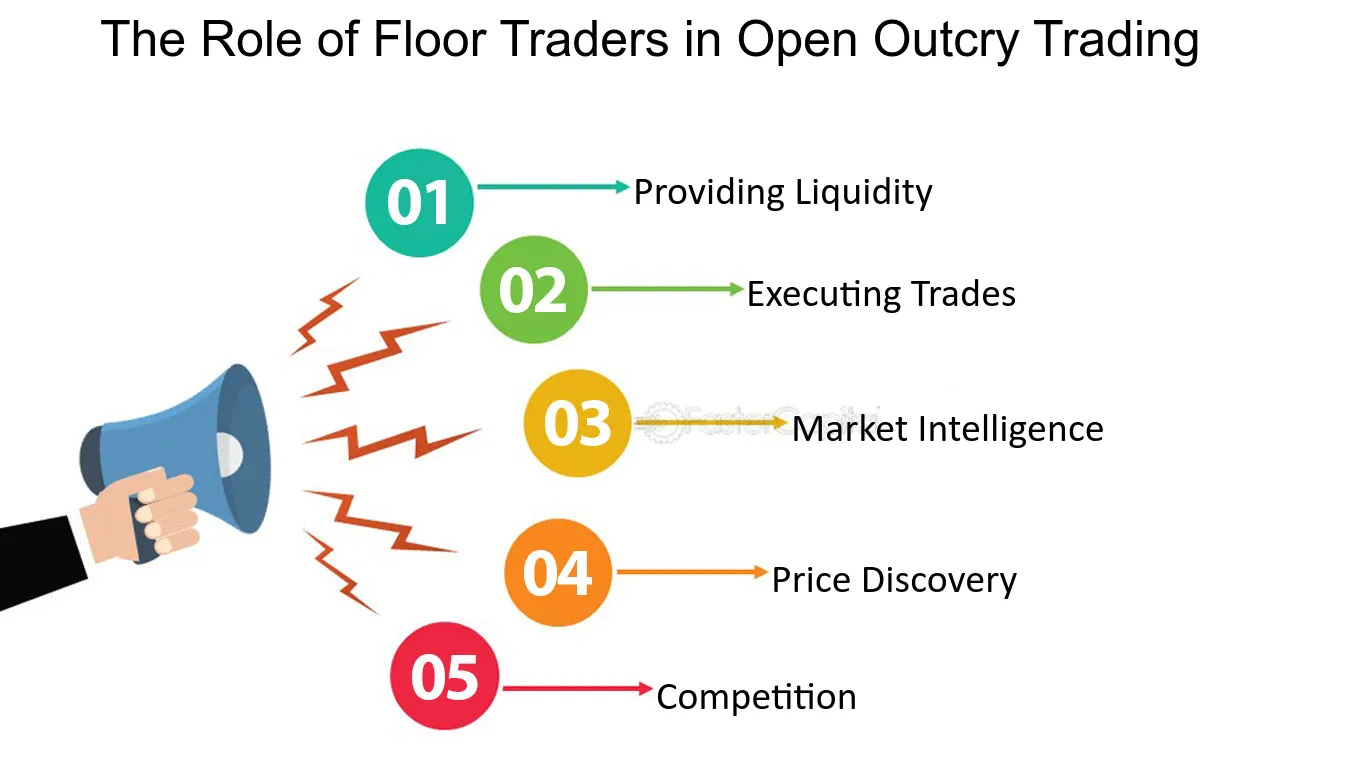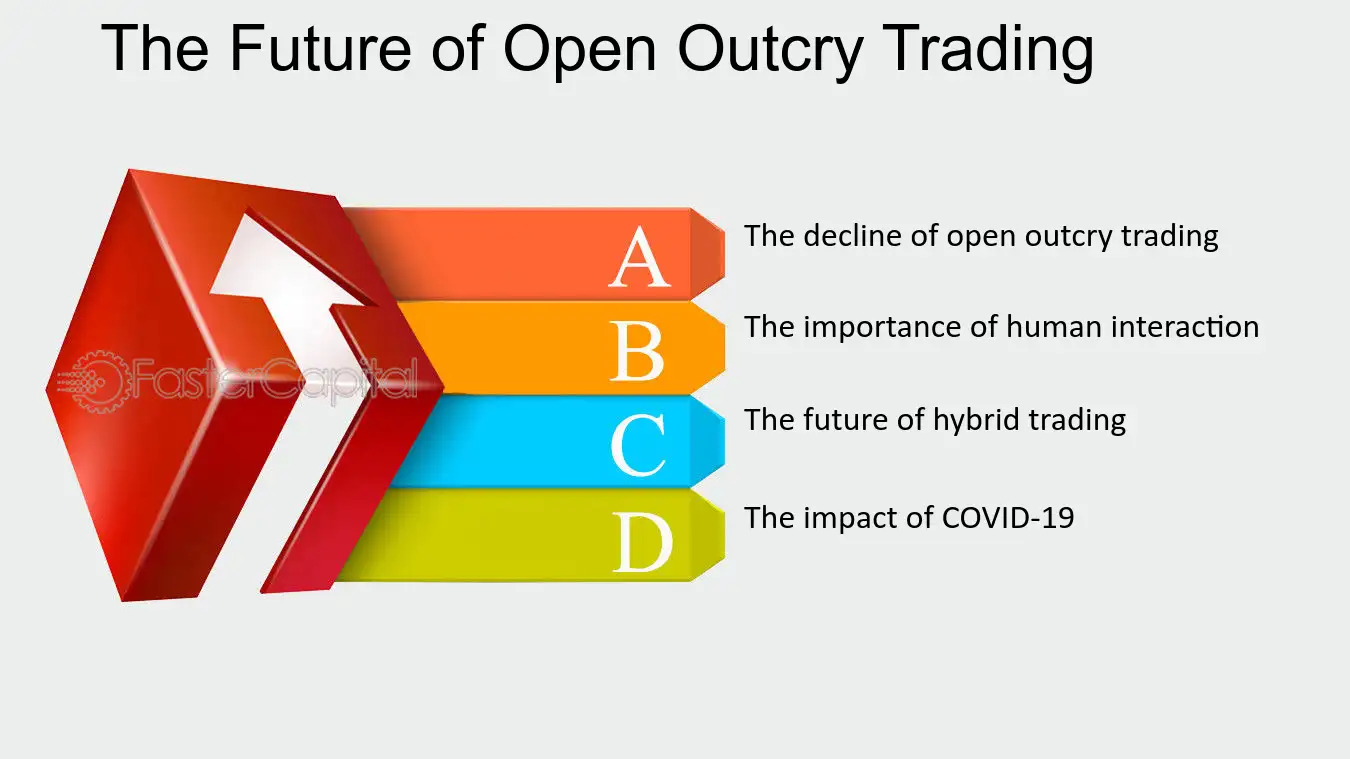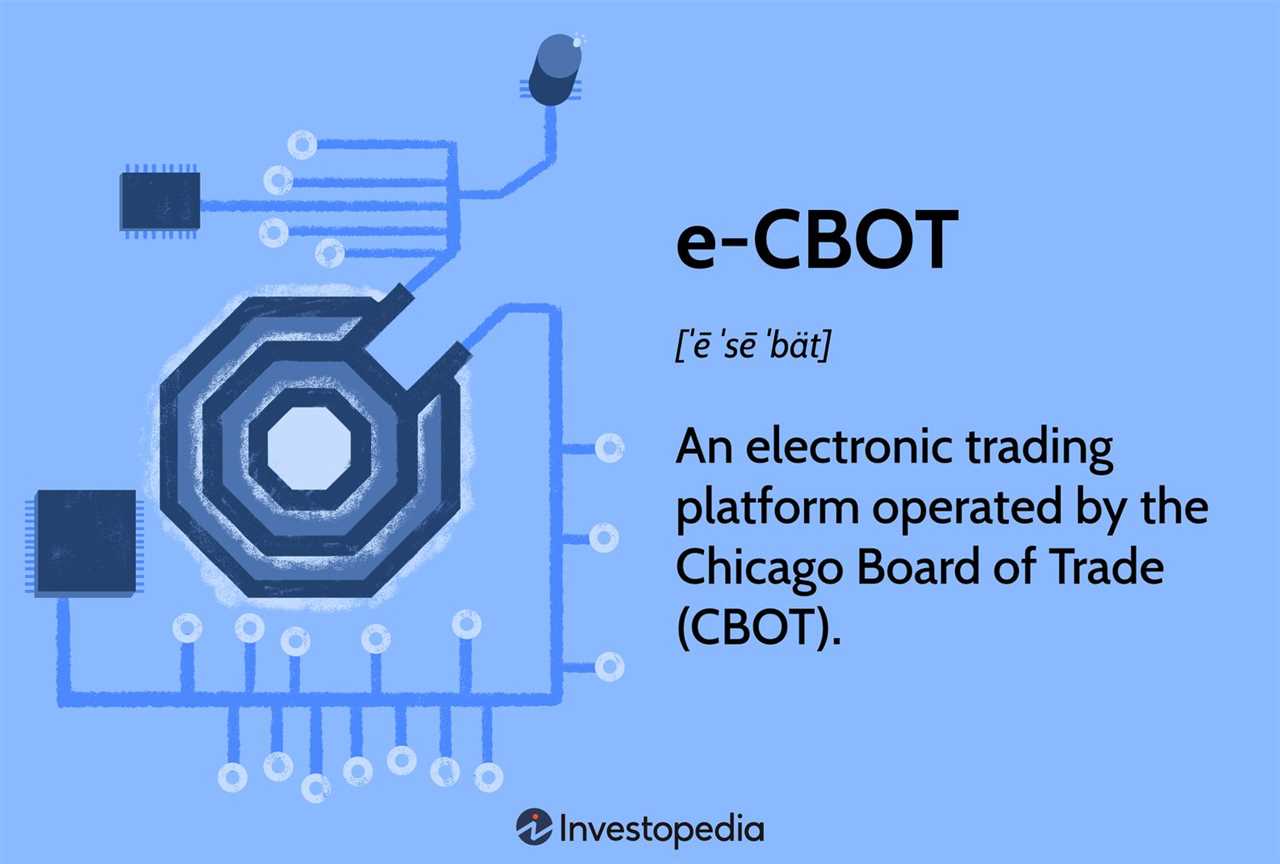The History of Open Outcry Trading
During the 19th and early 20th centuries, open outcry trading became increasingly popular, especially in the United States. Exchanges like the Chicago Board of Trade and the New York Stock Exchange became iconic symbols of this method of trading. Traders would gather in the pits, wearing brightly colored jackets to represent their firms, and use hand signals and shouts to communicate their intentions.
Evolution of Open Outcry Trading

Legacy of Open Outcry Trading
Despite its declining usage, open outcry trading still holds a certain nostalgic appeal and continues to be used in some markets, particularly in options trading. The unique atmosphere and camaraderie of the trading pits are often cited as reasons for its enduring popularity in certain circles.
Furthermore, open outcry trading played a crucial role in the development of financial markets and the establishment of trading practices and regulations. It served as a training ground for many successful traders and helped shape the culture and traditions of the financial industry.
The Advantages and Disadvantages of Open Outcry Trading
Advantages of Open Outcry Trading
- Transparency: One of the key advantages of open outcry trading is its transparency. Since traders are physically present and communicate their orders openly, it allows for a high level of transparency in price discovery. This transparency can help prevent market manipulation and ensure fair trading.
- Human Interaction: Open outcry trading allows for direct human interaction between traders, which can foster relationships and build trust. Traders can exchange information, share insights, and build a sense of community, which may not be possible in electronic trading platforms.
- Market Depth: In open outcry trading, traders can visually see the market depth, i.e., the number of buy and sell orders at different price levels. This information can help traders make informed decisions and gauge market sentiment.
Disadvantages of Open Outcry Trading

- Costs: Open outcry trading requires a physical trading floor, which involves significant costs for infrastructure, maintenance, and staffing. These costs can be prohibitive, especially for smaller exchanges or markets.
- Efficiency: Compared to electronic trading platforms, open outcry trading can be less efficient. It relies on human communication and can be prone to errors, misinterpretations, and delays. This can result in slower order execution and potentially higher transaction costs.
- Accessibility: Open outcry trading requires traders to be physically present on the trading floor, which can limit accessibility for traders who are not located nearby. This can exclude certain participants, such as individual retail traders or international market participants.
The Shift to Electronic Trading Platforms
In recent years, there has been a significant shift in the trading industry from traditional open outcry methods to electronic trading platforms. This shift has been driven by advancements in technology and the desire for increased efficiency and transparency in the trading process.
Advantages of Electronic Trading Platforms

One of the main advantages of electronic trading platforms is the speed at which trades can be executed. With open outcry trading, traders need to physically be present on the trading floor and communicate their orders verbally. This can be a time-consuming process, especially during periods of high trading volume. In contrast, electronic trading platforms allow traders to enter their orders directly into a computer system, which can execute the trades instantaneously.
Another advantage of electronic trading platforms is the increased accessibility they provide. With open outcry trading, only a limited number of traders can be physically present on the trading floor at any given time. This can create a barrier to entry for smaller traders who may not have the resources to compete with larger market participants. Electronic trading platforms, on the other hand, can be accessed from anywhere with an internet connection, allowing traders of all sizes to participate in the market.
Disadvantages of Electronic Trading Platforms

While electronic trading platforms offer many advantages, there are also some disadvantages to consider. One of the main concerns is the potential for technical glitches or system failures. If the electronic trading platform experiences a malfunction, it could result in delayed or erroneous trades, which can have significant financial implications for traders. Additionally, there is a risk of cyber attacks on electronic trading platforms, which could compromise the security of traders’ personal and financial information.
Another disadvantage of electronic trading platforms is the potential for increased market volatility. With the speed at which trades can be executed on these platforms, there is a greater risk of rapid price fluctuations and market instability. This can make it more challenging for traders to effectively manage their positions and execute their trading strategies.
Despite these disadvantages, the shift to electronic trading platforms has been largely embraced by the trading community. The increased speed, accessibility, transparency, and efficiency offered by these platforms have made them the preferred method of trading for many market participants. As technology continues to advance, it is likely that electronic trading platforms will continue to evolve and play an even greater role in the trading industry.

Emily Bibb simplifies finance through bestselling books and articles, bridging complex concepts for everyday understanding. Engaging audiences via social media, she shares insights for financial success. Active in seminars and philanthropy, Bibb aims to create a more financially informed society, driven by her passion for empowering others.
